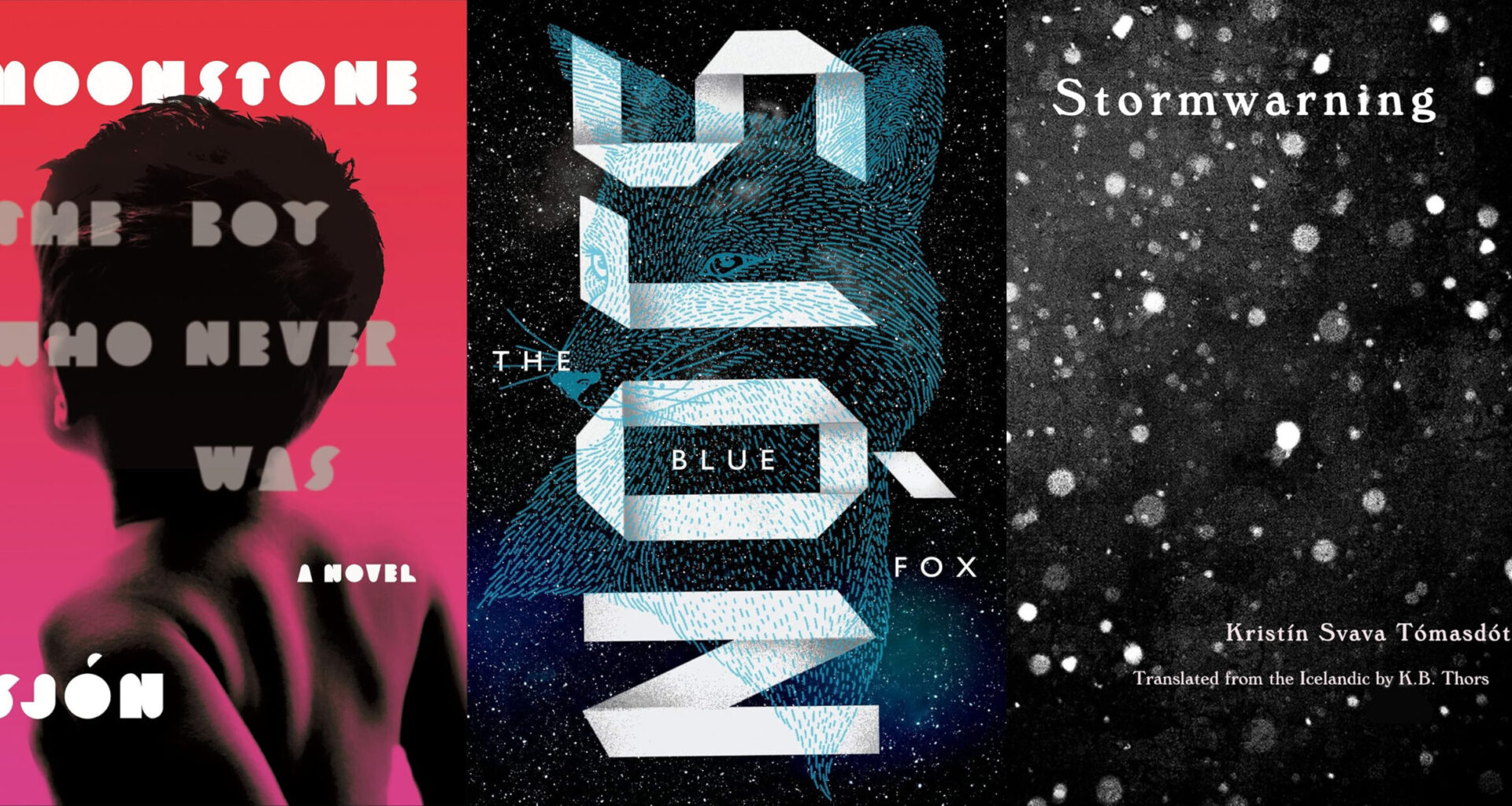One US-based writer’s take
Want to deepen your relationship with Icelandic literature in English translation but don’t know where to start? We’ve asked US-based professor of literature, Jenna Grace Sciuto, what she’d suggest.
No journey into Iceland’s lush literary landscape would be complete without a stopover in the land of Sjón, whose pen name fittingly means “sight” or “vision”. Born Sigurjón Birgir Sigurðsson (1962-), Sjón is a poet, novelist, lyricist, screenwriter — a co-author of director Robert Eggers’s 2022 film The Northman, in addition to Lars von Trier’s Dancer in the Dark (2000). Sjón is also known as a member of the Medúsa group, a surrealist art collective active in late 70s-mid 80s, and a collaborator of Björk (for extra credit, see his cameo as Johnny Triumph in the video for the Sugarcubes’s song “Luftgitar”). While The Blue Fox (translated by Victoria Cribb, 2008) might be the smoothest entry point into Sjón’s works, a lyrical mystery and contemporary folktale of sorts, I also highly recommend Moonstone: The Boy Who Never Was (translated by Victoria Cribb, 2016), which is the first Icelandic novel (hopefully of many!) that I’ve brought into my classroom in rural Western Massachusetts. Taking place in 1918 against the backdrop of World War I, the outbreak of the Spanish flu, and also the eruption of the volcano Katla, the novel is told through the perspective of a gay teenager on the outskirts of society who relates to the world through international cinema. It’s a powerful, at times surreal, novel that will have you questioning the line between reality and invention.
Highlighting a few more novels, there’s Auður Ava Ólafsdóttir’s (1958-) The Greenhouse (translated by Brian FitzGibbon, 2011), a poignant book about family connections and the value of the small things in life; Oddný Eir’s (1972-) Land of Love and Ruins (translated by Philip Roughton, 2016), a meditation on love, independence, and our relationship to the earth; and the book I’ve just finished during this writing, Jón Kalman Stefánsson’s (1963-) Your Absence is Darkness (translated by Philip Roughton, 2024), a sweeping novel reflecting on the intersections of life, desire, and death in and beyond a rural Icelandic community. Modernist classic, Guðbergur Bergsson’s (1932-2023) Tómas Jónsson, Bestseller (translated by Lytton Smith, 2017), takes the form of rambling notebooks written by a cantankerous old man, which might be a bit challenging to wade through, and yet, I’d recommend the effort for those interested in experimental aesthetics and stream-of-consciousness narration.
Finally, though I typically work with prose, I want to conclude with two dual-language poetry editions: Stormwarning (translated by K.B. Thors, 2018) by Kristín Svava Tómasdóttir (1985-) and Bloodhoof (translated by Rory McTurk, 2012) by Gerður Kristný (1970-). Both are powerful, historically and socially inflected works and ideal for language learners wanting to get a sense of the literary culture.
And as I’ve just revealed my identity as an Icelandic language learner, I’ll end with the writers I’d like to read more of whose work has yet to be significantly translated, such as Vigdís Grímsdóttir, mentioned above; Þórbergur Þórðarson (1888-1974), known for his autofiction — I’m eager to get my hands on a new translation, Icelandic Nobility (translated by Julian Meldon D’Arcy, 2024), not readily available outside of Iceland; Fríða Sigurðardóttir’s sister Jakobína Sigurðardóttir (1918-1994), also a talented novelist; and Elías Mar (1924-2007) and his novels set in mid-20th-century Reykjavík. Time will tell whether or not more works from these writers will be translated before I’ve developed my language skills enough to read the originals! I hope you enjoy exploring the world of Icelandic literature in English translation and discovering your own favourites!
This is the last in a four-part guide to Icelandic literature available in English translations.
Jenna Grace Sciuto is a professor of Global Anglophone Literature at the Massachusetts College of Liberal Arts.
